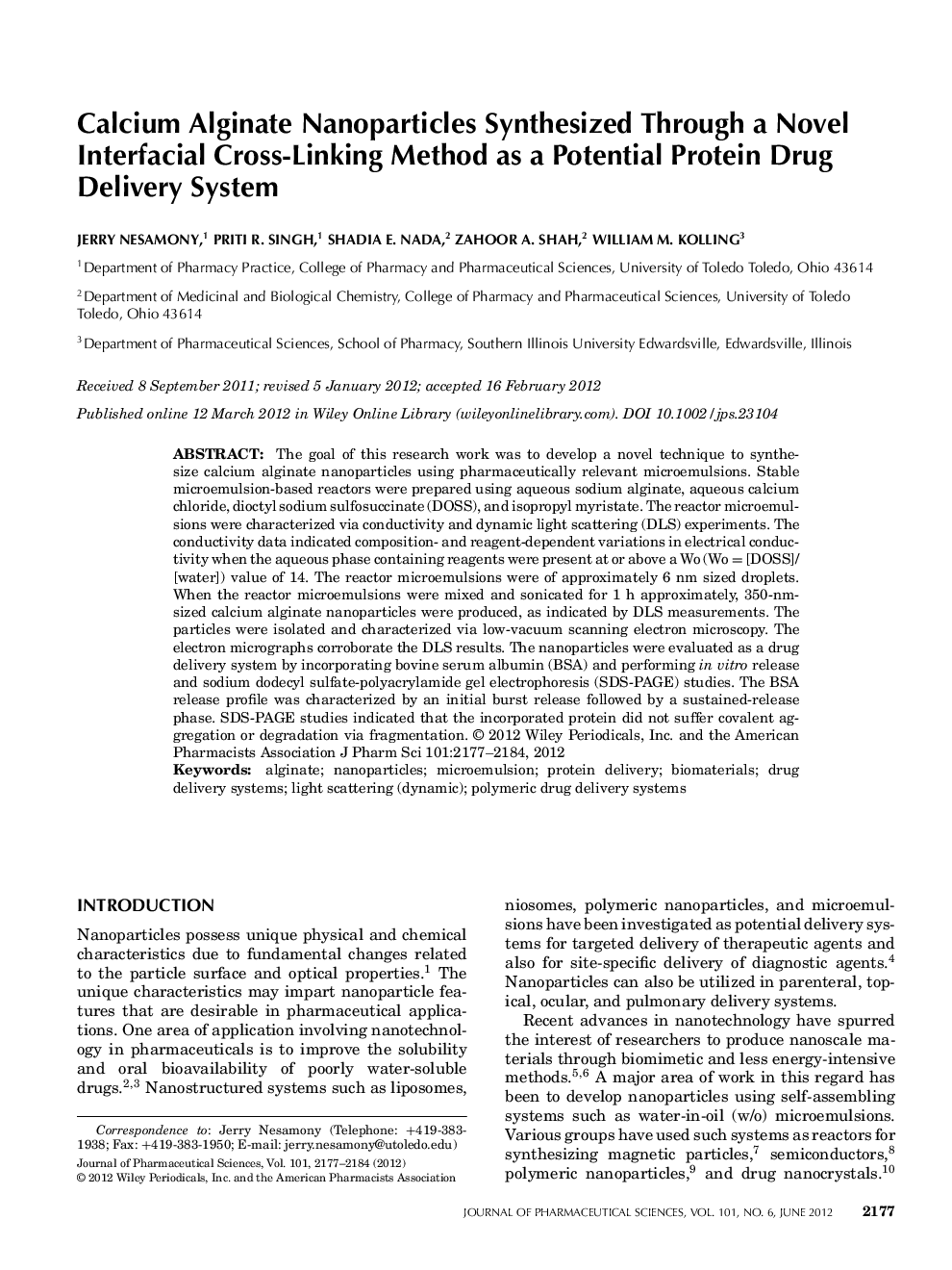| Article ID | Journal | Published Year | Pages | File Type |
|---|---|---|---|---|
| 2485746 | Journal of Pharmaceutical Sciences | 2012 | 8 Pages |
Abstract
The goal of this research work was to develop a novel technique to synthesize calcium alginate nanoparticles using pharmaceutically relevant microemulsions. Stable microemulsion-based reactors were prepared using aqueous sodium alginate, aqueous calcium chloride, dioctyl sodium sulfosuccinate (DOSS), and isopropyl myristate. The reactor microemulsions were characterized via conductivity and dynamic light scattering (DLS) experiments. The conductivity data indicated composition- and reagent-dependent variations in electrical conductivity when the aqueous phase containing reagents were present at or above a Wo (Wo = [DOSS]/[water]) value of 14. The reactor microemulsions were of approximately 6Â nm sized droplets. When the reactor microemulsions were mixed and sonicated for 1Â h approximately, 350-nm-sized calcium alginate nanoparticles were produced, as indicated by DLS measurements. The particles were isolated and characterized via low-vacuum scanning electron microscopy. The electron micrographs corroborate the DLS results. The nanoparticles were evaluated as a drug delivery system by incorporating bovine serum albumin (BSA) and performing in vitro release and sodium dodecyl sulfate-polyacrylamide gel electrophoresis (SDS-PAGE) studies. The BSA release profile was characterized by an initial burst release followed by a sustained-release phase. SDS-PAGE studies indicated that the incorporated protein did not suffer covalent aggregation or degradation via fragmentation. © 2012 Wiley Periodicals, Inc. and the American Pharmacists Association J Pharm Sci 101:2177-2184, 2012
Keywords
Related Topics
Health Sciences
Pharmacology, Toxicology and Pharmaceutical Science
Drug Discovery
Authors
Jerry Nesamony, Priti R. Singh, Shadia E. Nada, Zahoor A. Shah, William M. Kolling,
